Microservices architecture has revolutionized the ecommerce industry, delivering impressive results. With a 55% increase in deployment frequency and a remarkable 60% reduction in time to market, companies grasping microservices are growing in the digital era. In this blog, we explore the great benefits of building ecommerce microservices architecture.
What Is E-commerce Microservices Architecture?
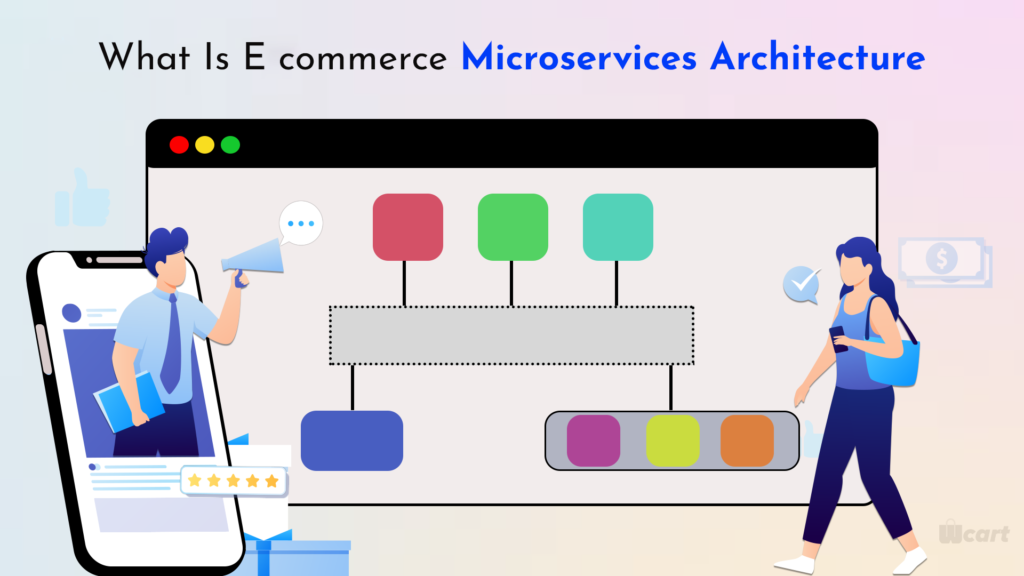
E-commerce microservices architecture involves breaking down complex ecommerce systems into smaller, independent services. Each service represents a specific business capability and can undergo independent development, deployment, and scaling. These services communicate with each other through well-defined APIs, allowing smooth integration and interoperability.
Visit Here: How Does Headless Commerce Architecture Built Explained
Key Characteristics Of Microservices Architecture In Ecommerce
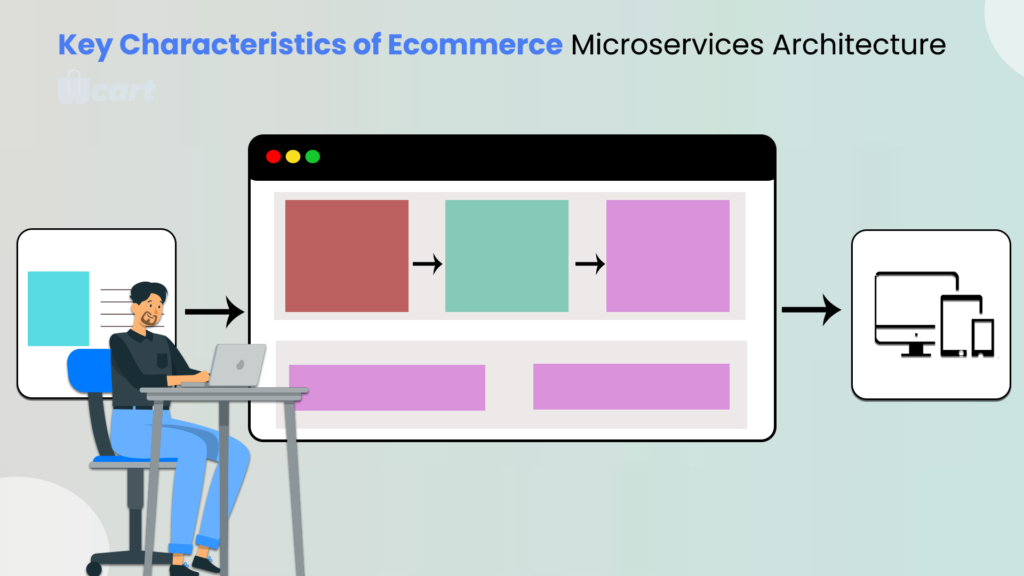
Several key characteristics contribute to ecommerce microservices architecture effectiveness.
- Decoupling enables businesses to make changes without affecting the system, leading to faster innovation and reduced development cycles.
- Scalability ensures optimal resource allocation, improved performance, and better handling of varying traffic loads.
- APIs enable flexibility in connecting and integrating different services, third-party applications, and external platforms.
- Isolation enables businesses to build resilient architectures by implementing redundancy and failover mechanisms, ensuring high availability and fault tolerance.
Visit Here: What Is Headless Commerce Explained
Case Studies of Successful Companies Utilizing Microservices In Ecommerce
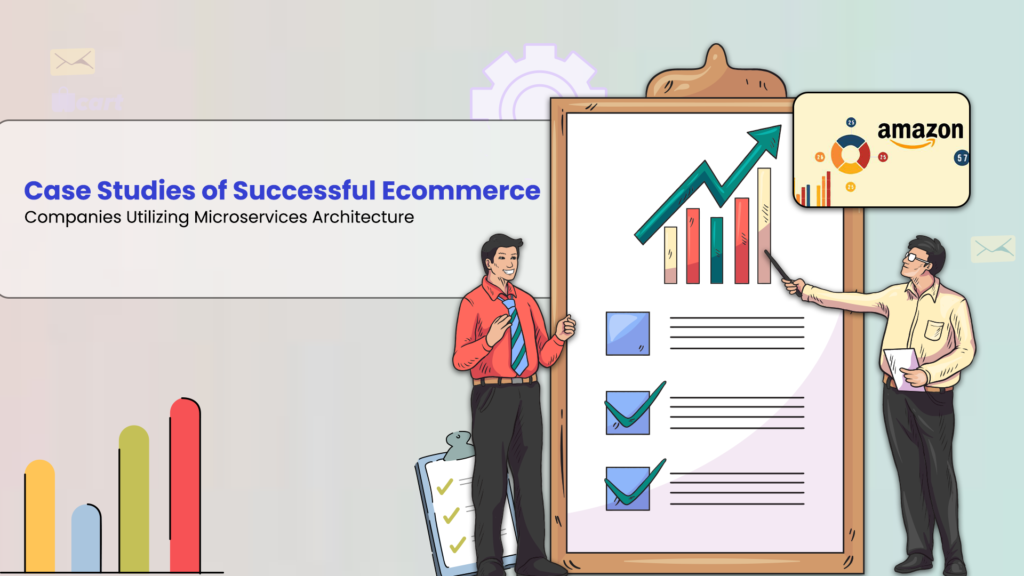
Several prominent ecommerce companies have successfully implemented microservices architecture to enhance their operations. Two ecommerce microservices architecture examples are mentioned below:
Examples:
- Amazon an ecommerce industry leader embraced microservices to build scalable and flexible systems that power its vast range of services.
- eBay, another major ecommerce player, leverages microservices to handle massive transaction volumes and provide a seamless user experience.
Visit Here: 9 Steps To Build A Ecommerce Website Like Amazon
Benefits of Building Ecommerce Microservices Architecture
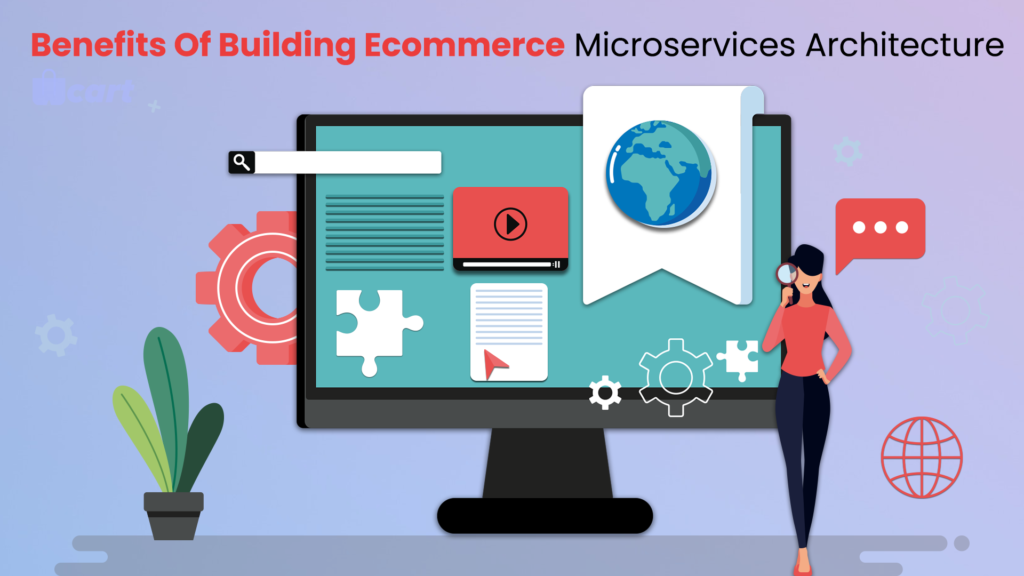
Building ecommerce microservices architecture offers numerous benefits, here are the 6 of them mentioned below:
1. Improved Scalability
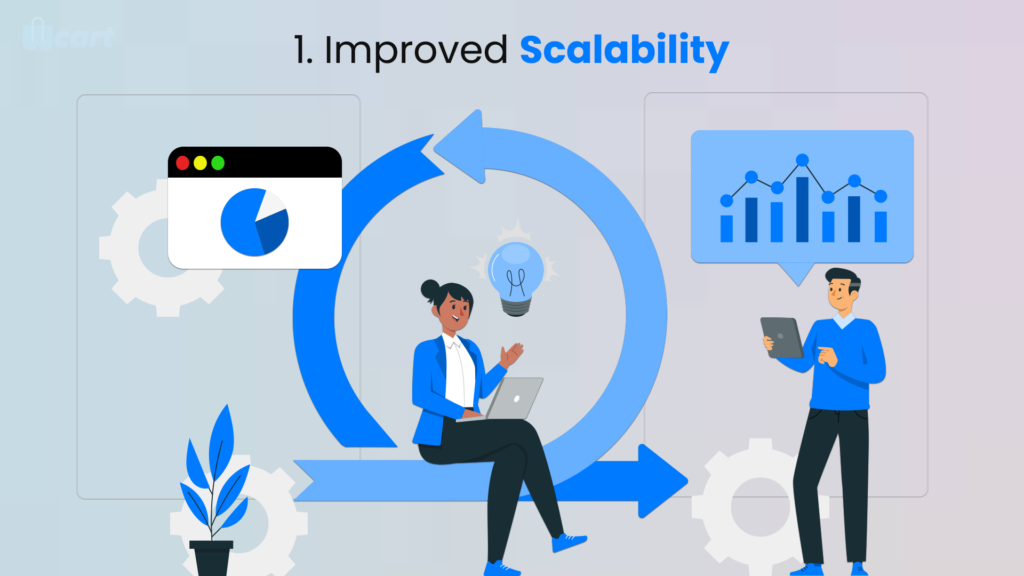
Enables businesses to scale the services effectively, accommodating varying levels of traffic and user demands without affecting the entire system. Businesses can achieve elastic scalability, dynamically allocating resources to meet changing customer demands and ensuring optimal performance during peak periods. Allows independent scaling of different services, enabling businesses to allocate resources based on individual service requirements, optimizing performance and resource utilization.
Visit Here: 12 Tips To Increase Ecommerce Conversion Rates
2. Enhanced Agility and Flexibility
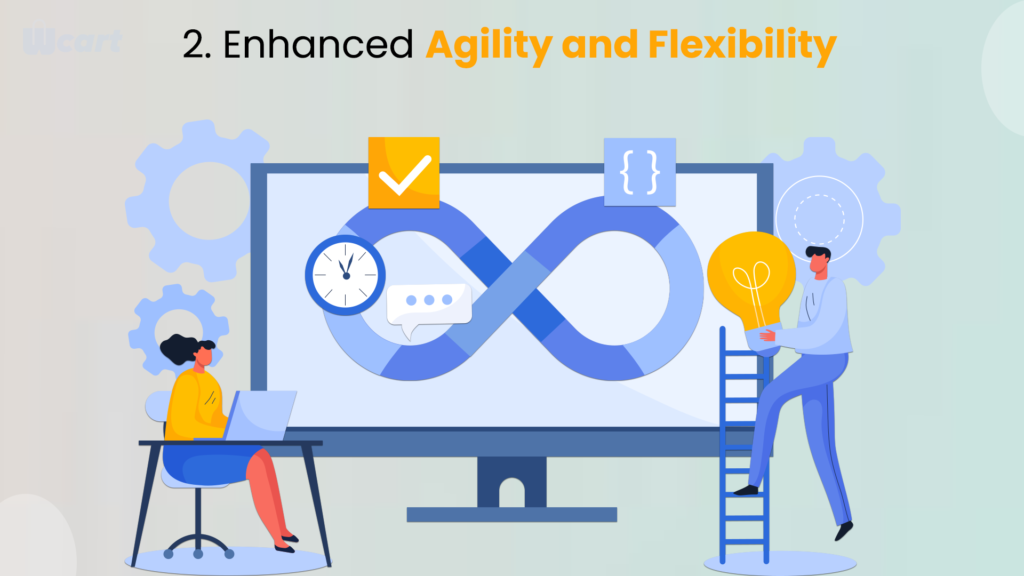
Provides businesses with enhanced agility and flexibility, allowing them to quickly adapt to market changes and meet evolving customer demands. Businesses can deploy and iterate new features rapidly, enabling them to stay ahead of the competition and deliver continuous innovation to the customers. Allows businesses to make changes to specific services without disrupting the entire system, providing the flexibility to update and improve individual components without impacting the overall functionality.
Visit Here: Headless Commerce Statistics And Trends
3. Increased Resilience and Fault Tolerance
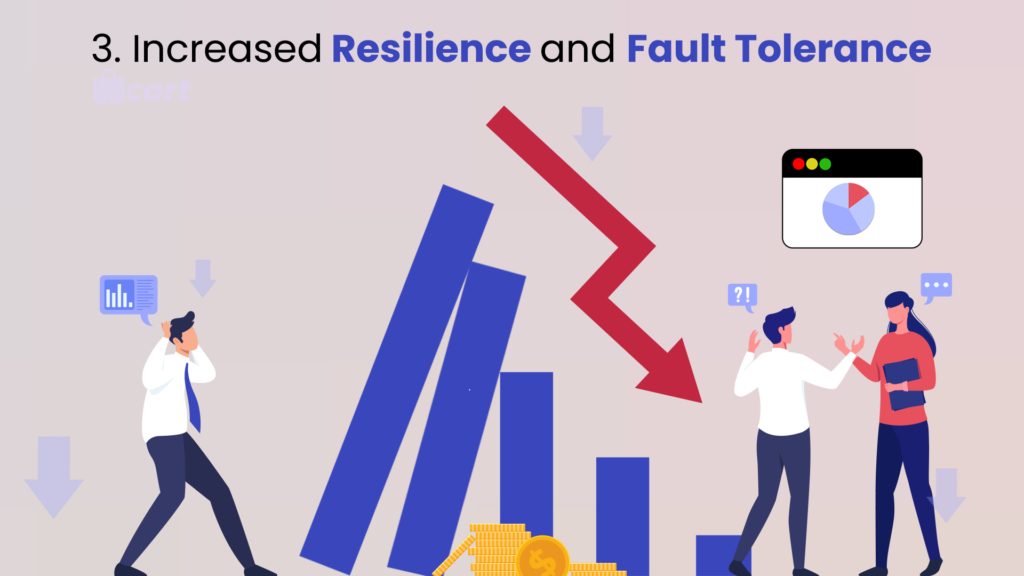
Enhances system resilience and fault tolerance by isolating failures within individual services, preventing them from spreading to other components, and ensuring the system remains operational. Failures in one service are contained, minimizing the impact on the overall system and allowing other services to continue functioning smoothly. Enables graceful degradation during service disruptions, allowing the system to continue operating with reduced functionality. It also facilitates efficient system recovery once the issues are resolved.
Visit Here: Future of Ecommerce Trends to Watch
4. Efficient Development and Maintenance
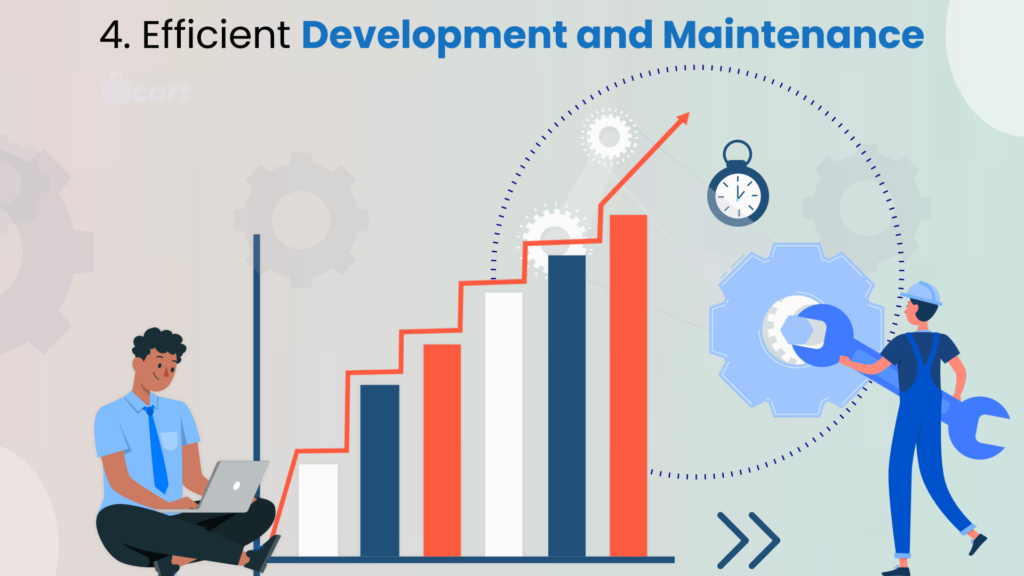
Supports efficient development and maintenance processes by enabling independent teams to work on different services concurrently, promoting productivity and reducing dependencies. Businesses can develop multiple services in parallel, speeding up the development lifecycle and enabling faster delivery of new features and functionalities. Allows businesses to have independent teams working on different services, each with its own technology stack, promoting innovation, specialization, and flexibility within the organization.
Visit Here: Headless Ecommerce Solution Benefits & Implementation Steps
5. Improved Performance and Responsiveness
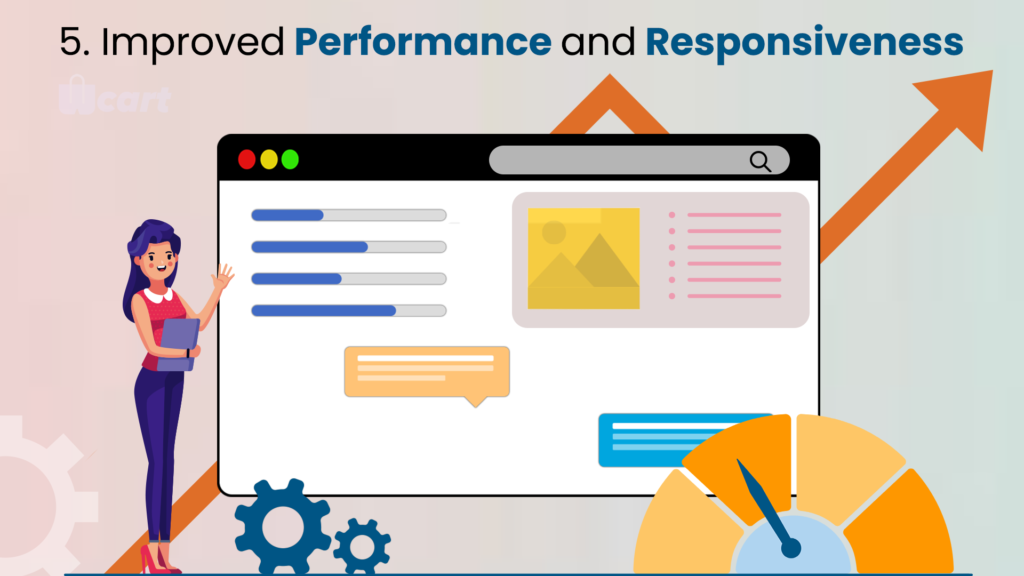
Enhances performance and responsiveness, as services can be individually optimized and scaled to handle specific tasks efficiently. Allows for optimized resource allocation, ensuring that resources are allocated based on the specific needs of each service, maximizing efficiency and cost-effectiveness. Response times are significantly improved as services can be designed and optimized independently, enabling faster execution and delivery of results.
Visit Here: Design Your Online Store with User Friendly and SEO Friendly Features
6. Seamless Integration with Third-Party Services
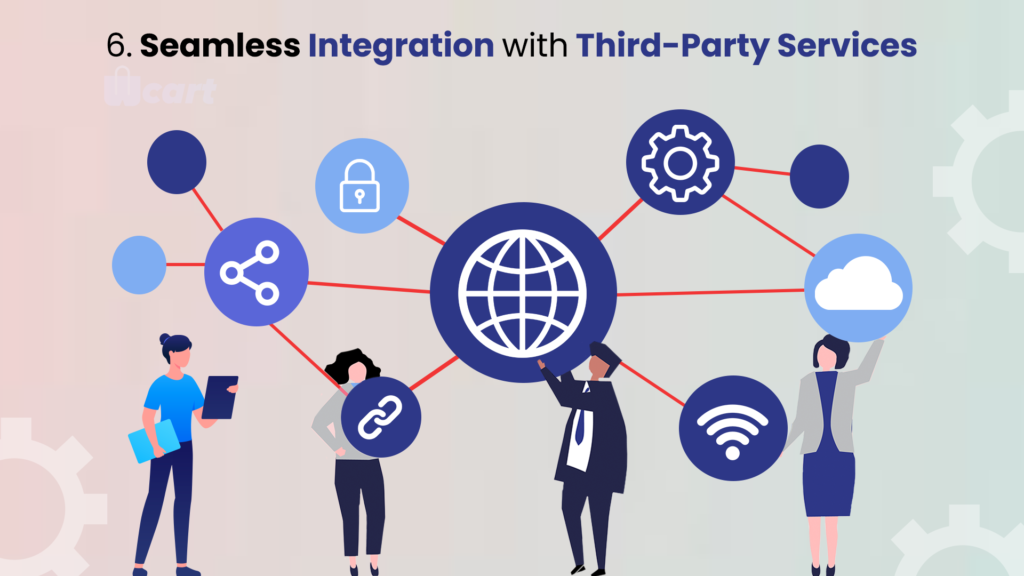
Allowing businesses to leverage external functionalities and expand their capabilities without major disruptions. Facilitates easy integration of external services, simplifying the process of incorporating new features or functionalities from external providers. It promotes streamlined collaboration with partners and vendors, as we can develop and maintain individual services independently, enabling efficient communication and integration with external entities.
Visit Here: How Does Headless Commerce Works?
Some Additional Benefits Of Building Microservices Architecture For Ecommerce
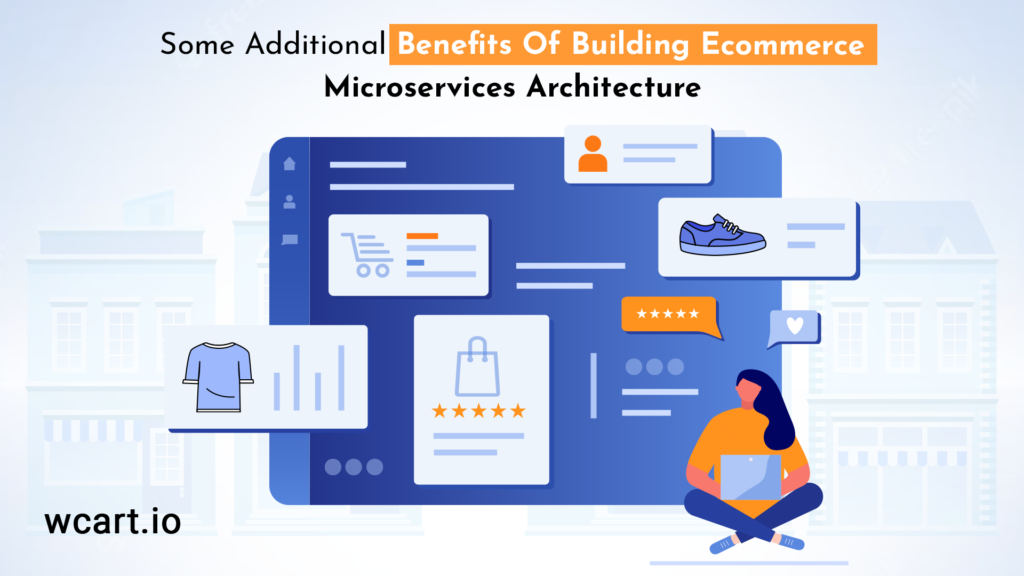
- Each service can be implemented using the most appropriate technology for its specific requirements. This flexibility enables organizations to leverage the strengths of different technologies.
- Different teams can work on different services independently, allowing for parallel development and faster time to market.
- Development teams can be organized around specific services, allowing for greater specialization and focus.
- Developers can focus on a specific service without impacting the entire system, making it easier to perform incremental upgrades and maintenance tasks.
Visit Here: Benefits of Headless ecommerce
Final Thoughts
In conclusion, building ecommerce microservices architecture provides enhanced agility, scalability, and flexibility, allowing businesses to rapidly establish new features and make changes without system-wide impact. With proper implementation and adherence to best practices, Wcart ecommerce microservices architecture unlocks huge potential for growth and innovation. If you have any queries, do contact the Ecommerce expert team.
Frequently Asked Questions(FAQs)
1. List out the benefits of building an ecommerce microservices architecture?
It provides scalability, flexibility, and agility to handle increasing traffic and demand, modify/replace services, and achieve faster deployment and updates.
2. How does the microservices architecture of ecommerce enhance system reliability?
It enhances system reliability, ensuring that service failures don’t affect the entire system, flexibility with redundancy and fault tolerance, and load balancing to prevent overload and improve performance.
3. What impact does microservices architecture have on development and maintenance?
Facilitates independent development, allowing teams to work on separate services simultaneously, enables easy updates to specific services without disrupting the entire system, and supports scalable teams with specialized expertise.
4. How does an ecommerce architecture improve system performance?
It improves system performance by enabling efficient resource allocation and utilization, minimizing dependencies between services, and allowing for optimized load balancing and scalability of individual services.
5. List a few long-term advantages of adopting an ecommerce microservices architecture.
Adopting it provides easier maintenance, scalability, flexibility, and adaptability to changing business needs.
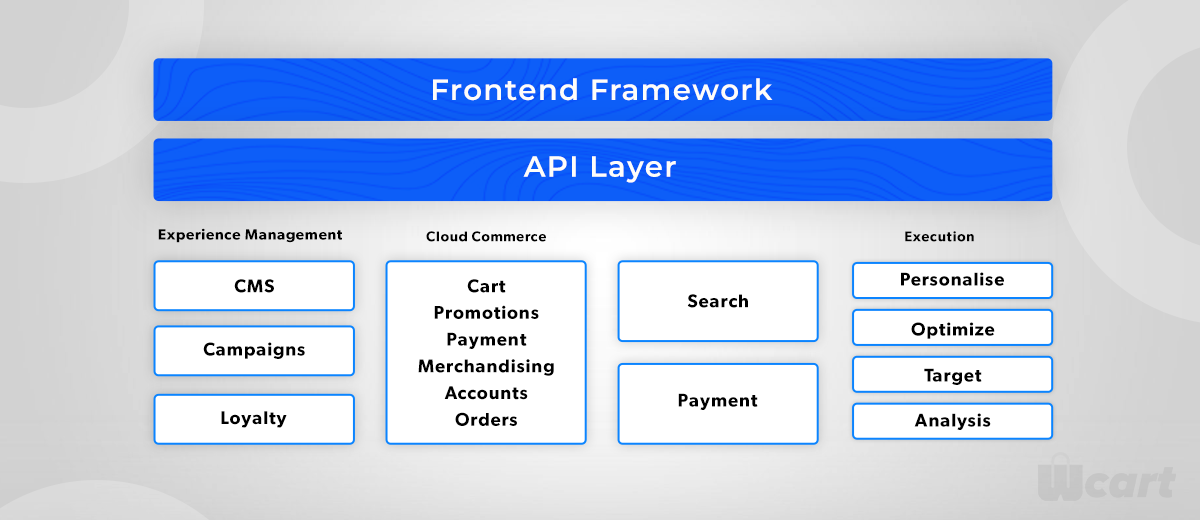



Leave a Reply